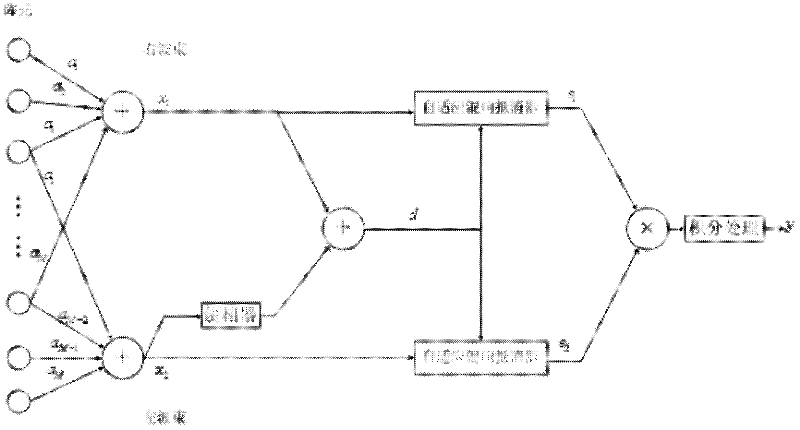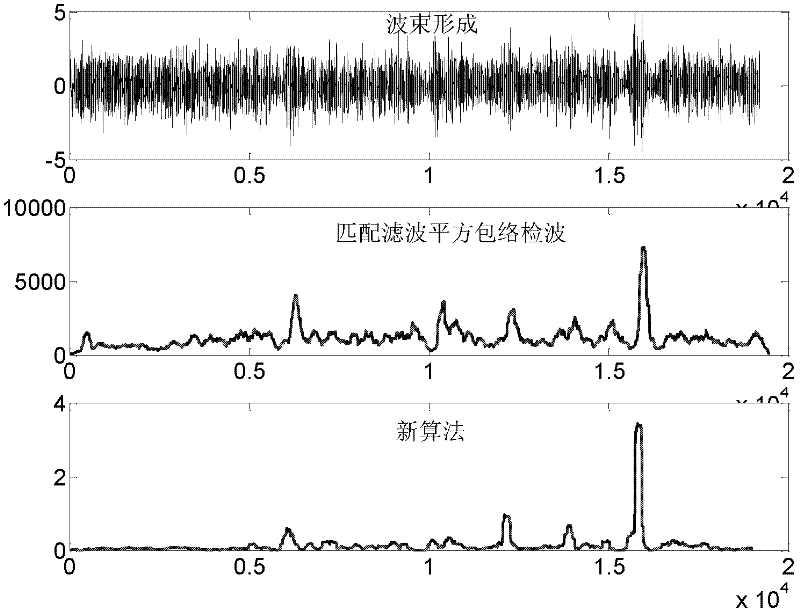Adaptive cancellation method for interference of underwater reverberation
An adaptive and reverberation technology, applied in radio wave measurement systems, instruments, etc., can solve problems such as ineffective detection of targets, and achieve the effect of improving detection performance and suppressing reverberation interference.
- Summary
- Abstract
- Description
- Claims
- Application Information
AI Technical Summary
Problems solved by technology
Method used
Image
Examples
specific example
[0033] Detect underwater sinking targets. When detecting sinking targets, the bottom reverberation is the main interference. The receiving array is a linear array with 16 elements, and the distance between the elements is 0.58cm. The transmitting array is an area array, which can illuminate a large area of the seabed. The transmitting signal is a linear frequency modulation signal with a bandwidth of 20kHz and a pulse width of 2.5ms. Splitting the beam to form two left and right beams, the beam direction is -4 degrees (the normal direction of the array is 0 degrees, the left direction is negative, and the right direction is positive), the left and right beams are each obtained by 15 array element data beamforming, using delay beams Form an algorithm. Perform phase inversion processing on the left beam data, add it to the right beam data to obtain a reference signal, respectively perform reverberation adaptive cancellation on the left and right beam data, the filter is an F...
PUM
 Login to View More
Login to View More Abstract
Description
Claims
Application Information
 Login to View More
Login to View More - R&D
- Intellectual Property
- Life Sciences
- Materials
- Tech Scout
- Unparalleled Data Quality
- Higher Quality Content
- 60% Fewer Hallucinations
Browse by: Latest US Patents, China's latest patents, Technical Efficacy Thesaurus, Application Domain, Technology Topic, Popular Technical Reports.
© 2025 PatSnap. All rights reserved.Legal|Privacy policy|Modern Slavery Act Transparency Statement|Sitemap|About US| Contact US: help@patsnap.com



